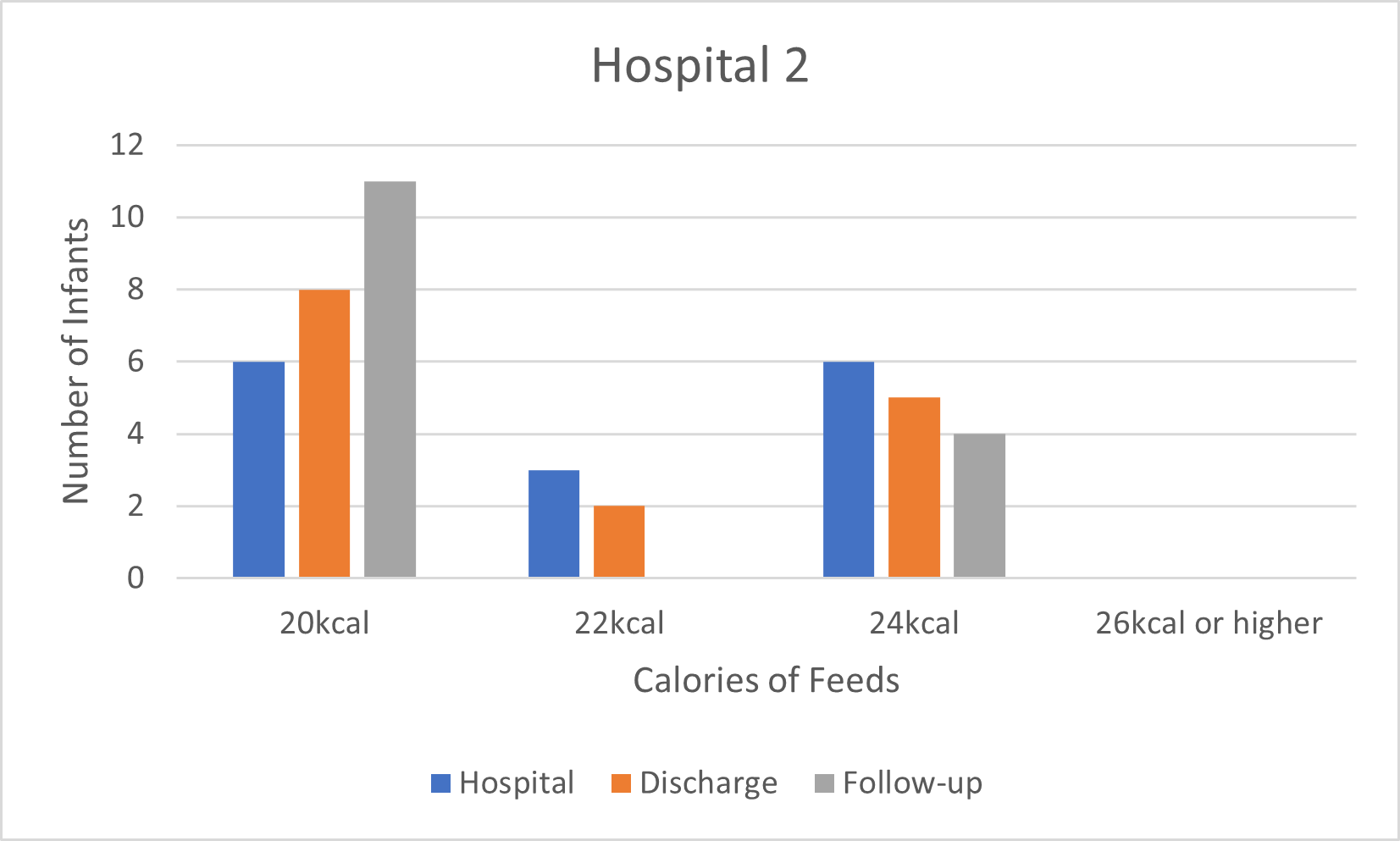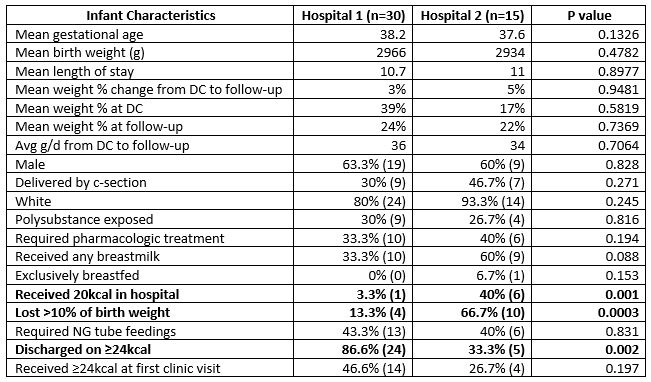Hospital Medicine: Newborn Care
Hospital Medicine 2
760 - Evaluation of Higher vs Standard Caloric Feedings in Opioid-Exposed Infants on Growth Outcomes
Friday, April 28, 2023
5:15 PM - 7:15 PM ET
Poster Number: 760
Publication Number: 760.12
Publication Number: 760.12
Jennifer McAllister, Cincinnati Children's Hospital, Cincinnati, OH, United States; Laura P.. Ward, Cincinnati Children's Hospital Medical C, Cincinnati, OH, United States; Clara Chlon, Cincinnati Children's Hospital Medical Center, Cincinnati, OH, United States; Christina Mattingly, University of Kentucky College of Medicine, Highland Heights, KY, United States

Jennifer McAllister, MD (she/her/hers)
Associate Professor
Cincinnati Children's Hospital
Cincinnati, Ohio, United States
Presenting Author(s)
Background: Neonatal opiate withdrawal syndrome (NOWS) affects infants after birth manifesting as both neurological and gastrointestinal symptoms of withdrawal. Weight loss is common, but there is little evidence about the impact of higher caloric feeds on growth outcomes during birth hospitalization and after discharge.
Objective: To evaluate the provision of higher calorie feedings during birth hospitalization on hospital weight loss and growth outcomes after discharge in opioid-exposed infants.
Design/Methods: We conducted a retrospective cohort study at two hospitals from October 2021 to June 2022 with different feeding practices for newborns with in utero opioid exposure and evaluated hospital and follow-up outcomes. Standard practice at Hospital 1 was provision of 20 kcal/oz feeds while standard practice at Hospital 2 was provision of 24 kcal/oz feeds. Infants were included if they were discharged from one of the two hospitals and attended a follow-up visit in the NOWS clinic. Infants born < 35 gestation were excluded. Data was collected from electronic medical records and included gestational age, birth weight, weight nadir, length of stay, substance exposure, feeding methods, highest kcals, discharge weight, and weight, feeding type, and kcals at first clinic visit. Demographic information such as sex, delivery type, and race were also recorded. Growth percentiles and z-scores for discharge weight and weight at first clinic were calculated based on the Fenton growth parameters tool on PediTools.org. Means between groups were compared utilizing t-tests, and proportions between groups were compared using chi-squared analysis.
Results: Thirty infants from Hospital 1, and 15 from Hospital 2 met inclusion criteria. Among those infants, 1 of 29 at Hospital 1 and 6 of 15 at Hospital 2 received 20kcal feeds during their birth hospitalization. Infants from Hospital 1 were more likely to receive and be discharged on higher calorie feedings and less likely to lose >10% of birth weight. There were no significant differences in birth characteristics and growth characteristics at the time of follow up between the two hospitals.
Conclusion(s): Infants with prenatal opioid exposure who receive higher calorie feedings are less likely to have significant weight loss during birth hospitalization. However, there was no difference in weight gain at their follow up visit so these infants may not continue to require higher calories after discharge. Further studies are required to understand the impact on breastfeeding on growth parameters in the hospital and after discharge.


.png)
